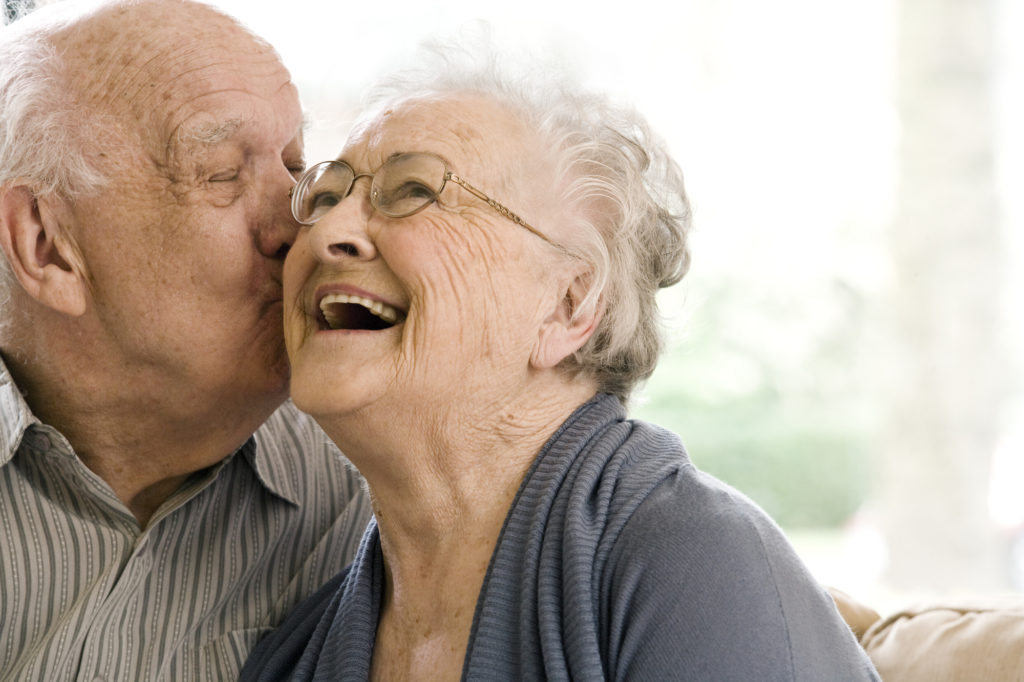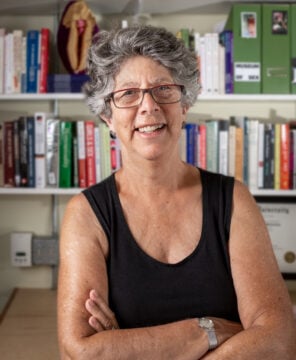The good news. Sexuality researchers have found that people continue to be sexual into their 70s and 80s. Better news! A majority of older adults report sex as integral to their quality of life and wellness. Why then is sexual wellness so often left out of programming for older adults? In my own teaching, I’ve heard from so many people who have rich sexual lives well into their 90s. And for those who are not being sexual, they are still thinking about their bodies, their past romances, their sexual losses, and what I find is most inspiring, their sexual hopes and aspirations.
Research focused solely on dysfunction.
While older adults may be having or thinking about their sexual lives, many health care and gerontology professionals seem to ignore the sexual expression of older adults. And while sexual expression has been generally overlooked, sexual dysfunction is the focus of most sexuality research with older adults. When the focus is on dysfunction rather than on pleasure for older adults, I find that we lose track of the nuances. What we have missed in that rather narrow binary between the invisibility of their sexual desires and the hyper-attention on the medicalization of sexual behaviors is the richness and complexity of emotional intimacy, sexual expression, and pleasure.
What’s ageism got to do with it?

Ageism offers us a rather narrow view of older adults. We all know the stereotypes. We’re sick, frail, unbalanced, over the hill, washed up, dried up, can’t get it up, oversexed. And these epithets are not just reserved for the men. Women are also called lecherous, cougars, cradle robbers, to name just a few. Unless these stereotypes are pulled apart, it limits our choices. For example, gender-based thinking once gave young women two options: good girl or slut; and young men two other options: nice guy or stud. We all recognize that wasn’t much of a choice back then and the new stereotypes we face don’t give us much of a choice now.
Stigmas related to aging create invisibility.
Instead of seeing the great multiplicity of experiences, older adults’ actual sexual lives slowly become invisible. We’re seen as either asexual (with a myriad of causalities) or hypersexual (often present with cognitive impairments). Yet new research has revealed that older adults’ sexual lives go far beyond these one-dimensional stereotypes. In fact, our sexual lives are as multi-layered and complex as the overall older population. The intersection of sexuality and aging offers us a new view as we look at older adults based on what we are learning of other issues such as race and ethnicity, gender, sexual orientation, sexual identity, among other important aspects of life.
Our concept of wellness must be broadened.
In the last decade, wellness has become a fundamental component of many senior living communities. Gone are the days when you’d see a shuffleboard court and a bingo game as the only sponsored activities. Programming currently abounds focused on physical health, nutritional health, financial health, spiritual health, emotional health, mental acuity, socialization, and opportunities for volunteerism and creativity. Many communities have targeted programming for people with disabilities like arthritis, cognitive impairments like Alzheimer’s, or neurological disorders like Parkinson’s Disease. Yet given the constraints between ageism and dysfunction, how do we approach the inclusion of sexual wellness in our overall concept of wellness? Where would it fit in with the wellness programming we’ve constructed for our residents?
Sexual wellness can be part of your program.
Sexual wellness programming is not just about how to have sex (though that would be a really fun topic with some of the residents I know). Sexual wellness programs could include topics for residents along the whole continuum of sexuality:
- Intimacy after loss
- Navigating the new rules for dating and relationships
- Introduction to modern concepts of consent
- Safety in the online dating environment, pornography, and cybersex
- Safer sex protections and STIs (sexually transmitted infections)
- Changing the sexual script for aging bodies
- Diversity, equity, and inclusion for LGBTQ populations, alternative sexual and gender identities
- Ethical, legal, and financial concerns for family members
Back when I was in graduate school for human sexuality education, we did practicum and community placements to hone our teaching skills with sensitive subjects. What I would have given to work with a senior living community to help tackle these difficult topics. And now that I am out doing trainings such as these, I have found the seniors in my classes to be receptive, respectful, and open to new learning.
Measuring sexual wellness.

How would we measure sexual wellness? Is wellness just the absence of disease? If that is the case, then researcher Maggie Symes and her colleagues have pondered whether the absence of sexual dysfunction is an indicator of sexual wellness or whether sexual wellness means much more. While one-third of older adults report at least one sexual problem and there is an increase in the prevalence of sexual problems as we age, then we might assume at least one-third of all older adults are not able to achieve sexual wellness as they age. But research has shown us, that is not the case. The research does help us understand that the sexual script must adapt and expand as we age, including sexual behaviors beyond penis-in-vagina intercourse (or “outercourse”). Research looking at sexual satisfaction in older adults in heterosexual and same-sex relationships report sexual satisfaction declines in long-term relationships. Even when these same older adults reported sexual dysfunction, they were not distressed by it.
Improving the quality of life.
One way to look at sexual wellness is by asking older adults what they think. Research has given us some clues. Researchers studying the Sexual Quality of Life (SQoL) tested whether sexuality decreases with age. In a large-scale study, over 6,000 adults ages 20-93 reported that their quality of life increased in age when the following were present: perceived control, time, thought and effort invested in sex, and sexual partner variability.
Imagine a senior living community where sexuality is an integral part of wellness.
Older adults’ sexuality is expressed in a wide variety of ways across one’s lifespan. We must broaden our concept of wellness to include not just the absence of disease but the improvement of our quality of life and enjoyment. Imagine a senior living community where a resident’s sexuality is acknowledged and recognized, where staff training, policies, environment, and culture combine to fully embody sexual wellness. Now that’s a place I’d like to live.


 Dr. Jane Fleishman
Dr. Jane Fleishman